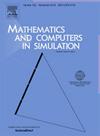Efficient approximation of global population dynamic models through statistical inference using local data
IF 4.4
2区 数学
Q1 COMPUTER SCIENCE, INTERDISCIPLINARY APPLICATIONS
引用次数: 0
Abstract
Biological growth curves are pivotal in predicting natural growth across disciplines, typically analyzed using nonlinear least squares or maximum likelihood methods. Bhowmick et al. (2014) introduced the interval-specific rate of parameters (ISRP) for growth equations, improving the estimation of relative growth rate (RGR) and model selection accuracy. Despite its effectiveness, computing these model-specific RGR estimates involves complex calculations and lacks explicit expressions for many nonlinear models. Also, for highly nonlinear models and non-monotonic data where the parameters are non-linearly related, the computation of interval estimates is almost impossible and may suffer from significant approximation errors. So, the need for a more efficient computation method for ISRP remains a significant challenge in growth studies. In this article, we propose a computational approach to obtain interval estimates of parameters based on the maximum likelihood estimation method. The likelihood function is maximized using the data on smaller intervals. Our study underscores the importance of an efficient ISRP computation technique, providing a more stable, unbiased, and normally distributed estimator. The most important advantage is that it can be implemented using existing optimizers in software packages efficiently, therefore, giving more accessibility to the practitioners. Both simulation studies and real data analysis have been carried out to validate the proposed estimation process. Additionally, its applicability to non-monotonic growth profiles and its robustness in handling highly non-linear growth equations highlight its versatility. We also developed a web application GpEM-R which is freely available for researchers and practitioners to analyze growth data.
通过使用本地数据进行统计推断,高效逼近全球人口动态模型
生物生长曲线是预测各学科自然生长的关键,通常使用非线性最小二乘法或最大似然法进行分析。Bhowmick 等人(2014 年)为生长方程引入了特定区间参数率(ISRP),从而提高了相对生长率(RGR)的估算和模型选择的准确性。尽管该方法很有效,但计算这些特定模型的 RGR 估计值涉及复杂的计算,而且对许多非线性模型缺乏明确的表达式。此外,对于参数非线性相关的高度非线性模型和非单调数据,区间估计值的计算几乎是不可能的,而且可能会产生很大的近似误差。因此,需要一种更有效的 ISRP 计算方法仍然是生长研究中的一个重大挑战。在本文中,我们提出了一种基于最大似然估计法获得参数区间估计值的计算方法。利用较小区间上的数据使似然函数最大化。我们的研究强调了高效 ISRP 计算技术的重要性,它提供了一个更稳定、无偏和正态分布的估计值。最重要的优点是,它可以利用现有软件包中的优化器高效地实现,因此,从业人员更容易使用。我们进行了模拟研究和实际数据分析,以验证所提出的估算过程。此外,它对非单调增长曲线的适用性以及在处理高度非线性增长方程时的稳健性也凸显了它的多功能性。我们还开发了一个网络应用程序 GpEM-R,供研究人员和从业人员免费使用,以分析生长数据。
本文章由计算机程序翻译,如有差异,请以英文原文为准。
求助全文
约1分钟内获得全文
求助全文
来源期刊

Mathematics and Computers in Simulation
数学-计算机:跨学科应用
CiteScore
8.90
自引率
4.30%
发文量
335
审稿时长
54 days
期刊介绍:
The aim of the journal is to provide an international forum for the dissemination of up-to-date information in the fields of the mathematics and computers, in particular (but not exclusively) as they apply to the dynamics of systems, their simulation and scientific computation in general. Published material ranges from short, concise research papers to more general tutorial articles.
Mathematics and Computers in Simulation, published monthly, is the official organ of IMACS, the International Association for Mathematics and Computers in Simulation (Formerly AICA). This Association, founded in 1955 and legally incorporated in 1956 is a member of FIACC (the Five International Associations Coordinating Committee), together with IFIP, IFAV, IFORS and IMEKO.
Topics covered by the journal include mathematical tools in:
•The foundations of systems modelling
•Numerical analysis and the development of algorithms for simulation
They also include considerations about computer hardware for simulation and about special software and compilers.
The journal also publishes articles concerned with specific applications of modelling and simulation in science and engineering, with relevant applied mathematics, the general philosophy of systems simulation, and their impact on disciplinary and interdisciplinary research.
The journal includes a Book Review section -- and a "News on IMACS" section that contains a Calendar of future Conferences/Events and other information about the Association.
 求助内容:
求助内容: 应助结果提醒方式:
应助结果提醒方式:


